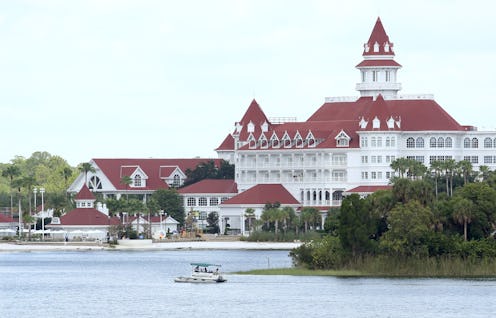News
There's One Rule For Florida Lagoons
After authorities spent nearly two days searching for a 2-year-old toddler from Nebraska who was shockingly dragged by an alligator into Walt Disney World's Seven Seas Lagoon on Tuesday evening, it is quite natural for a certain level of public safety concern to arise. Alligators are widely considered a threatening creature, but many don't know how frequently attacks actually occur. Are lagoons in Florida are safe for swimming? Unfortunately, the answer is rather alarming, as Florida is known for its gators with good reason. But for swimmers, not all hope is lost as far as the frequency of attacks are concerned.
Despite the fact that alligators are technically endangered in particular areas, the American alligator has actually made quite a comeback and is no longer an endangered species. However, it is still considered a threatened species because of its similarities to the American crocodile, which is endangered; hunters are liable to confuse the two. That said, there is no shortage of American alligators in the Sunshine State. In fact, the alligator has remained the official state reptile of Florida since 1987. Lagoons are a common spot to find gators, and Florida has no shortage of lagoons.
Alligators can comfortably settle down in an approximate 6.7 million acres across Florida, as these millions of acres provide proper living conditions for the gators. Most of this is near water, where alligators are most threatening to humans, as they are not well-equipped to capture prey on dry land. As a result, alligators tend to hunt both prey that are easily available to them — in or near water — and are potentially easy to overpower. Even so, humans are not typically prey for alligators, and attacks are still rare despite the animal's prevalence in Floridian freshwater. Since 1973, alligators have killed 23 people and the Sunshine State typically has around seven unprovoked bites per year, though most are not fatal. There is no evidence of alligators ever really chasing prey on land.
Alligator attacks have generally occurred in freshwater spots; lagoons in Florida fall into the category of freshwater, and so they are a likely place for gators. However, the risk of an attack is relatively low. As for the correlation between alligators and lagoons? Assume their presence, rather than their absence. According to David Steen, an assistant research professor in biological sciences at Auburn University, "Overall, the risk is low. ... [Yet] I would assume any body of water has an alligator in it in Florida."
So is it safe to swim in Floridian lagoons and other freshwater spots? As Steen puts it, "You know, there are sharks in the ocean, but I still go swimming in there. So it's something that everybody should just keep in the back of the mind." He explains that he wouldn't swim anywhere near a spotting of large alligators, and adds that it is crucial for people "to learn about the natural landscape where they're visiting," and for the local area to "help make sure that folks are reasonably informed."
Additionally, the Florida Fish and Wildlife Conservation Committee advises against swimming outside of daylight hours, since alligators are most active between dusk and dawn. In the rare case an alligator comes near, escape the premises as quickly as possible; if it attacks, get aggressive by hitting, kicking, or poking its eyes. Alligators are less likely to pursue prey they cannot easily overpower.
